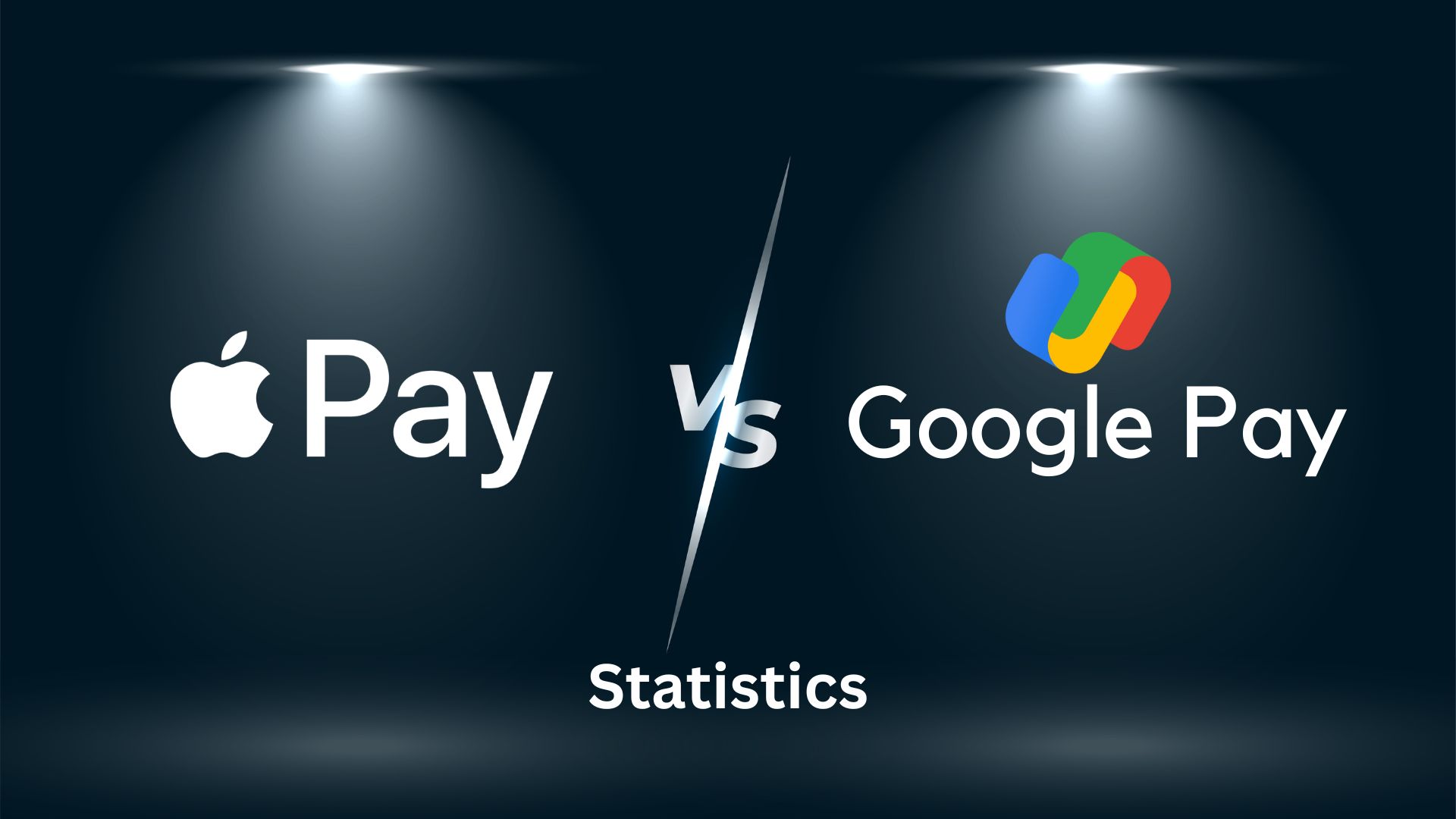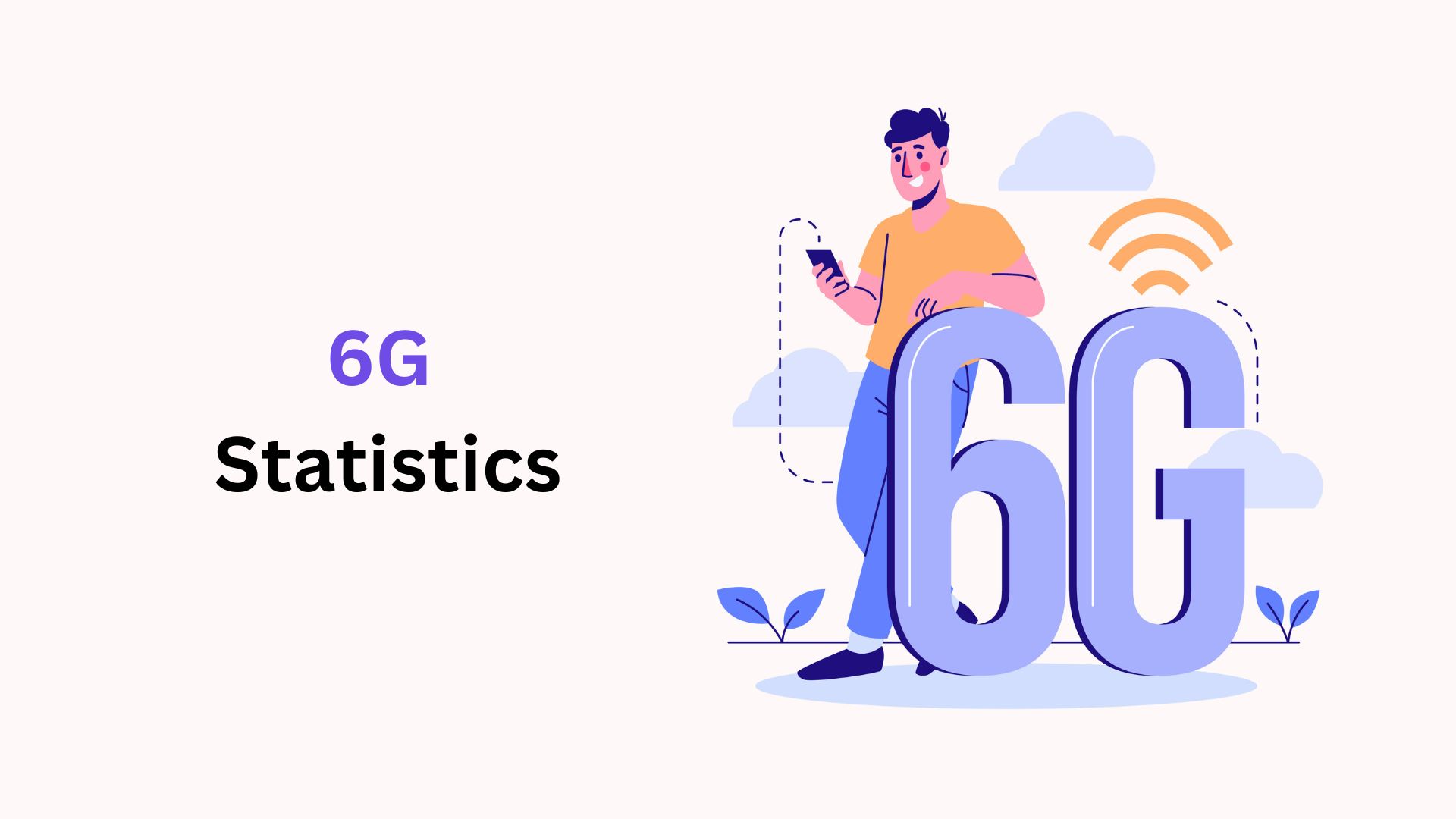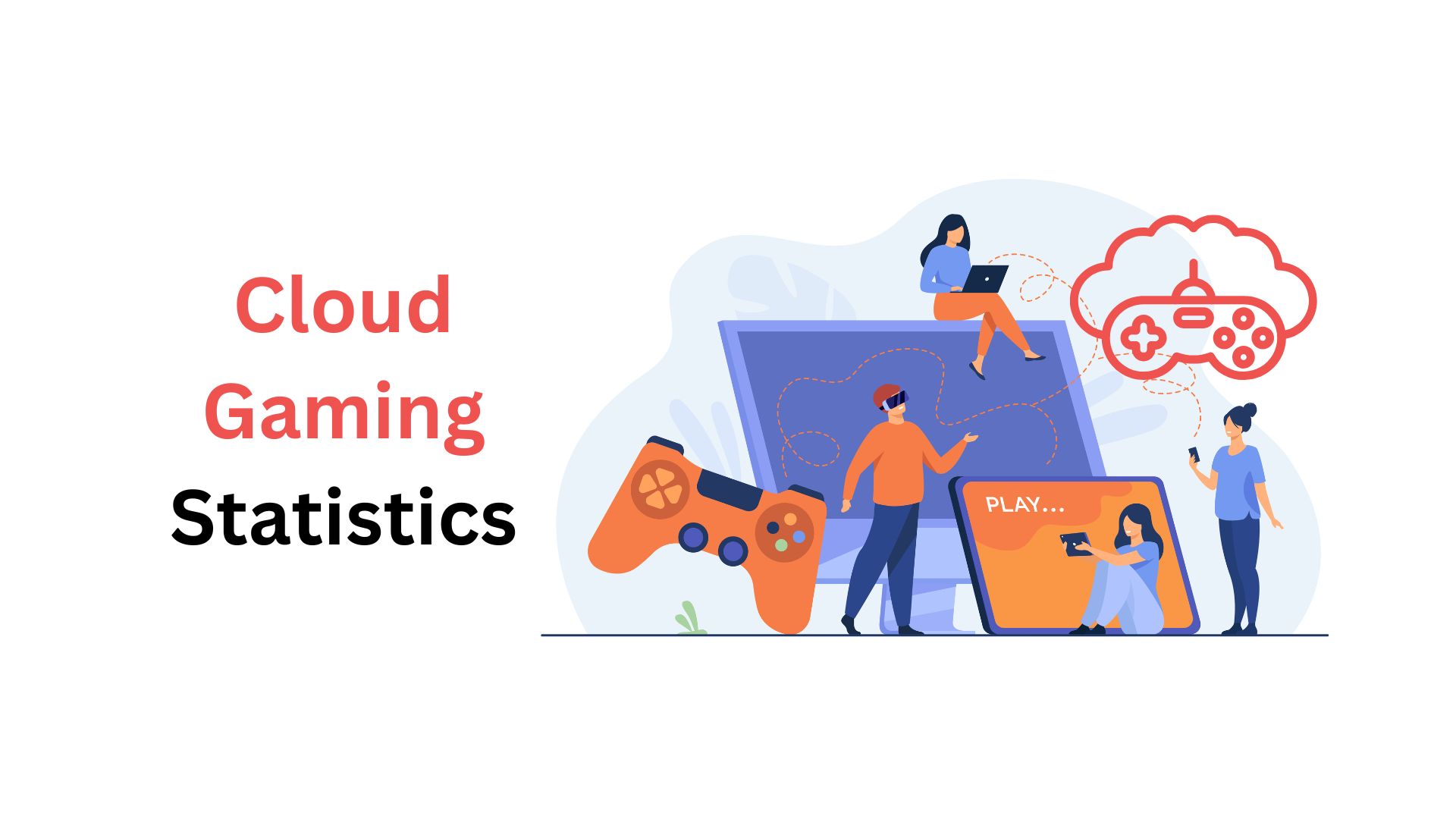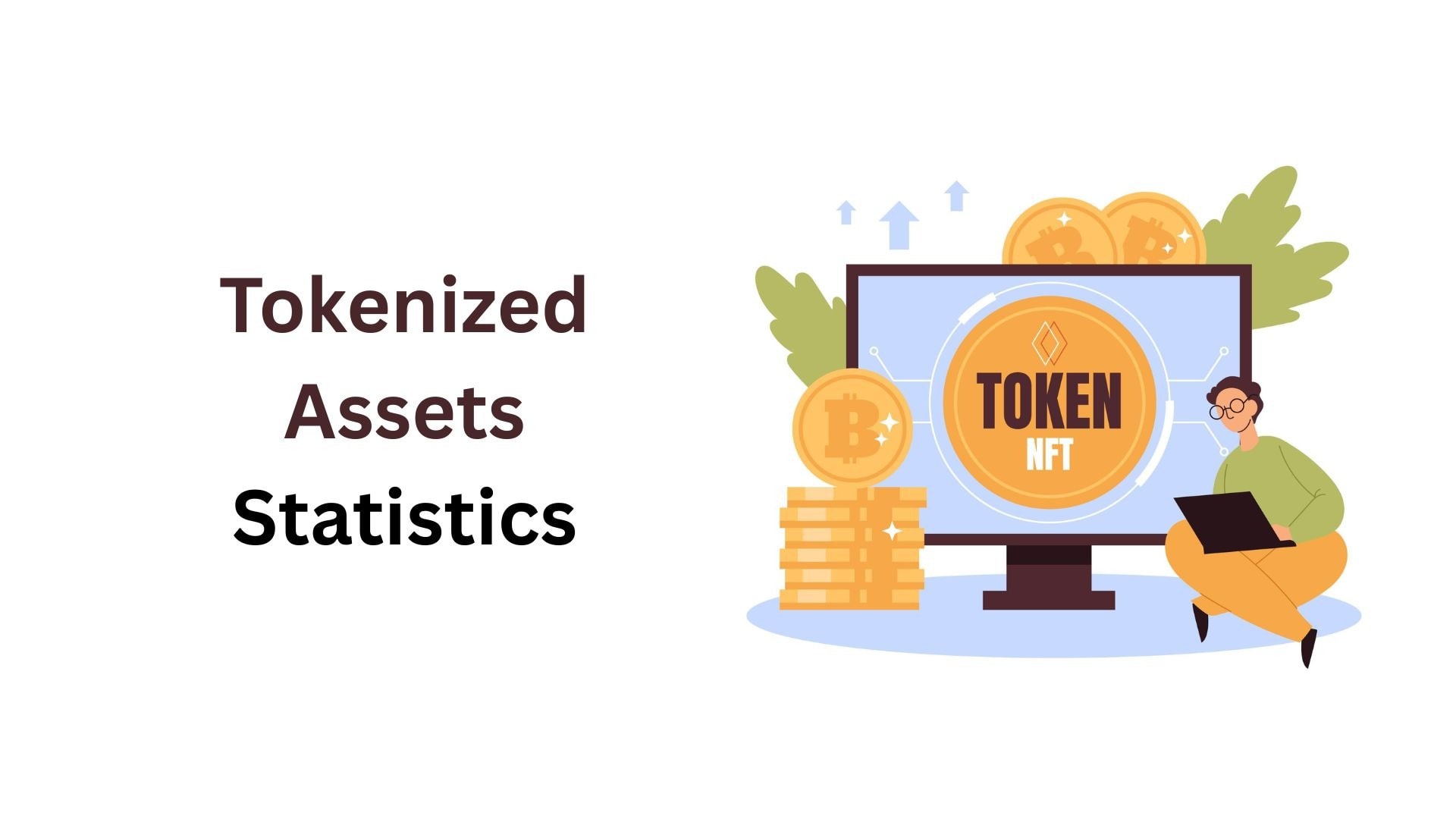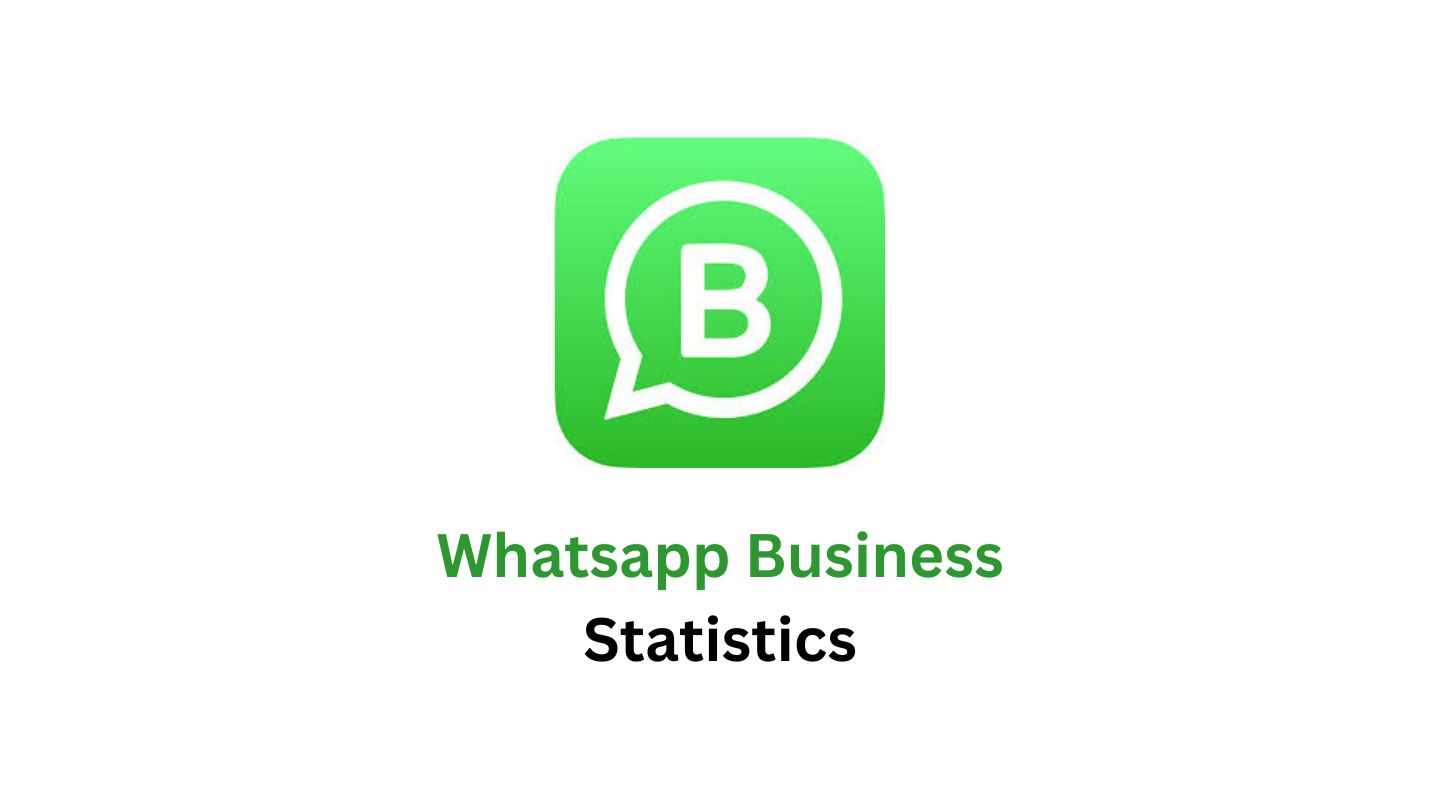AI PC Statistics By Usage, Shipment, Market Size and Facts (2025)
Updated · Nov 27, 2025
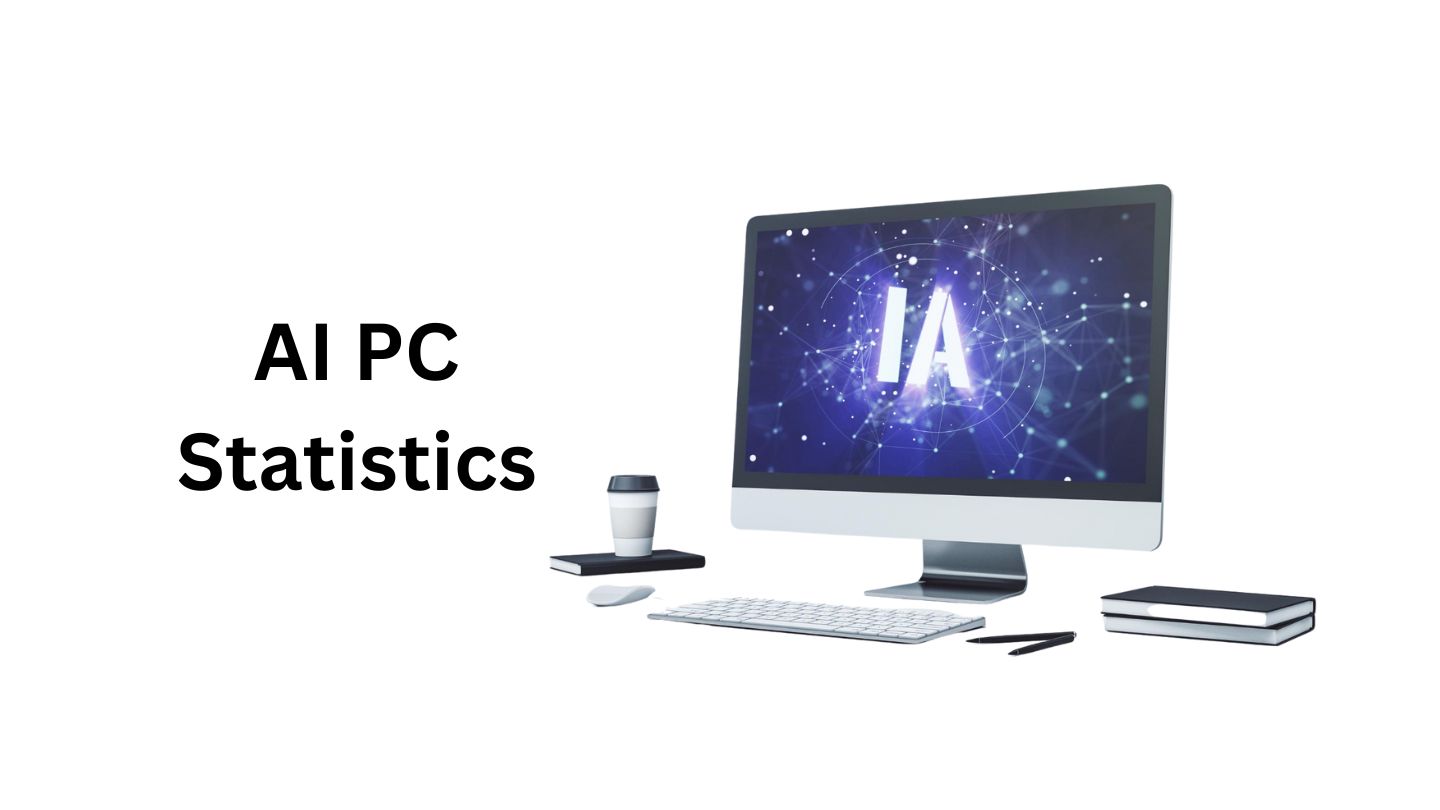
Table of Contents
- Introduction
- Editor’s Choice
- General AI PC Statistics
- Gartner – AI PCs and Windows 10 Deadline Lift Global PC Shipments
- AI PC Market Size
- AI-Capable PC Adoption Curve Statistics
- AI PC By OS and Brands
- By Compute Type
- AI PC Shipment Statistics
- AI PC Market By Country
- Top Departments Expected to Receive AI PCs First
- Top Expected Impacts of AI PCs
- Impact of AI PC Launch on Organisational PC Refresh Plans
- Consumer Awareness of AI-Enabled Products Statistics
- Consumer Interest in AI-PCs Versus Other Laptop Priorities
- Key Barriers to Buying AI PCs Statistics
- Awareness of NPUs and AI PCs Among IT Decision-Makers
- Conclusion
Introduction
AI PC Statistics: An AI PC is are specifically designed computer to run AI and machine learning tasks autonomously. It includes an NPU alongside the CPU and GPU, enabling it to process AI tasks locally without relying on the cloud. These devices differ from regular computers because they include specialized hardware and on-device AI that enable them to run tasks faster, handle data more efficiently, and offer smarter experiences.
As interest in artificial intelligence continues to grow, more industries, such as business, education, and entertainment, are turning to AI PCs. Looking at the latest statistics shows how quickly the market is rising, how users are adopting these devices, and how companies are adding advanced features to them. Together, these trends reveal what the future of computing may look like in an AI-focused world.
Editor’s Choice
- According to Market.us, the global AI PC market is estimated to reach USD 56.8 billion in revenue by 2025, up from USD 44.1 billion in 2024.
- Based on regional analysis, the Asia Pacific held the largest market share, nearly 42%, in 2024.
- A report published by wccftech.com stated that in the second quarter of 2024, macOS accounted for nearly 60% of AI PC shipments.
- As of 2025, Windows will dominate the global AI PC market with a 78.6% share.
- In the global AI PC market by compute type, GPUs hold 53.4% share, NPUs account for 28.0%,
- According to communicationstoday.co.in, global shipments of AI PCs are expected to reach approximately 114 million units by 2025.
- A report published by Future Market Insights stated that from 2025 to 2035, the AI PC market CAGR is strongest in China at 57.8%.
- Meanwhile, in 2025, organizations expect IT to receive AI PCs first (86%), followed by marketing and operations (each at 51%).
- As of 2024, organizations expect AI PCs to eliminate repetitive tasks (83%), help employees focus (79%), and drive higher productivity (76%).
- Surveyed consumers report AI-PC barriers include 43% lack awareness of benefits, while 42% question on-device AI privacy and security.
General AI PC Statistics
- Computerworld.com reports that by 2025, personal computers with AI baked into hardware and software will ship 77.8 million units, taking 31% of the worldwide PC market.
- The installed base of AI PCs should jump from 5% in 2023 to 94% worldwide by 2028.
- In work settings, x86 devices running Windows are forecast to dominate, holding 71% of AI laptops in 2025, while Arm machines capture 24%.
- Attitudes are mixed, with around 55% of US online adults liking that AI PCs keep private interactions local on their computer.
- As of February 2025, about 50% still do not see why they need an AI PC, and 61% feel they do not use AI enough.
- Over 60% prefer waiting for prices to fall, while only 33% would upgrade sooner for AI.
- Analysts expect 40% of software vendors to target AI built for PCs by 2026, up from just 2% in 2024.
- AI PCs are forecast by Gartner to represent 31% of the global PC market by the end of 2025, with worldwide AI PC shipments expected to reach about 77.8 million units.
- The growth of AI PCs is being influenced by tariffs and pauses in PC purchasing caused by economic uncertainty, yet users are still expected to adopt AI PCs to prepare for stronger AI usage at the device level.
- AI PC share of the total PC market is projected to rise from 15.6% in 2024 to 31.0% in 2025, and further to 54.7% in 2026.
- Within laptops, AI systems are expected to account for 19.4% of the total laptop market in 2024, 35.7% in 2025, and 58.7% in 2026.
- Within desktops, AI desktops are projected to hold 3.8% share of the desktop market in 2024, increase to 16.4% in 2025, and reach 42.1% in 2026.
- Total AI PC shipments are expected to grow from 38,145 thousand units in 2024 to 77,792 thousand units in 2025 and further to 143,113 thousand units in 2026, indicating a rapid shift toward AI-enabled hardware.
- Gartner expects AI PCs to become the standard form factor in the PC market by 2029, as AI functionality at the device level becomes a core requirement rather than a premium feature.
- The preference for AI PC platforms differs between consumers and business users, with Arm-based laptops anticipated to capture a higher share of the consumer segment once application compatibility issues are resolved.
- In the business laptop market, x86 systems running Windows are projected to remain dominant, representing 71% of AI business laptops in 2025, while Arm-based business laptops are expected to reach 24% share in the same year.
- Gartner anticipates that by the end of 2026, 40% of software vendors will prioritize investments in AI capabilities that run directly on PCs, a sharp increase from 2% in 2024.
- Multiple small language models are expected to run locally on PCs by 2026, up from zero local deployments in 2023, enabling on-device AI with faster responses, lower energy use, and less dependence on cloud resources.
- Gartner AI Use Case Insights is presented as an interactive tool that allows technology and business leaders to explore more than 500 AI use cases and over 380 real-world case studies, filtered by industry, function, and business value, in order to support structured decision-making on AI adoption.
Gartner – AI PCs and Windows 10 Deadline Lift Global PC Shipments
- According to Gartner, Global PC shipments increased 8% in Q3 2025, indicating a clear rebound driven by stronger commercial demand and wider adoption of AI-enabled devices.
- A total of 69 million PCs were shipped worldwide in Q3 2025, marking the second consecutive quarter of year-over-year growth according to Gartner.
- The market expansion has been supported by rising interest in AI-powered PCs equipped with NPUs, which are gaining traction in premium and business categories.
- The Windows 10 end-of-support deadline on October 14 encouraged businesses to accelerate device upgrades, creating a notable replacement cycle across major regions.
- Education and public sector purchases contributed meaningfully to U.S. demand, reflecting continued investment in modern computing infrastructure.
- Gartner noted that worldwide PC shipments in Q3 2025 were influenced by the Windows 10 refresh cycle, while North America’s growth remained limited to 1.6% due to earlier tariff-driven procurement.
- AI PCs are projected to represent 31% of all PC shipments in 2025, more than double their previous year share, suggesting over 77 million AI-capable units will ship globally during the year.
- The U.S. PC market recorded strong performance, driven by government and educational spending, while Asia Pacific and Latin America also experienced positive shipment momentum.
- The EMEA region continued to show stagnant demand because of persistent economic pressures and market uncertainty.
- Lenovo held the leading global position in Q3 2025 shipments, with HP and Dell following, supported by stable commercial demand and improved U.S. performance for HP.
- Apple and Acer registered year-over-year shipment growth, highlighting broader recovery across consumer and professional PC categories.
- Previous Gartner research indicated that AI PCs are expected to become the standard by 2029, accounting for more than half of global shipments.
- IDC findings showed that major IT leaders plan significant AI PC investments in 2025, and projections suggest these devices could reach a 93% market share by 2028.

(Source: petri.com)
AI PC Market Size

(Source: market.us)
- The Global AI PC Market size is expected to be worth around USD 433.1 Billion by 2033, increasing from USD 34.2 Billion in 2023, growing at a CAGR of 28.9% during the forecast period from 2024 to 2033.
- In 2023, the APAC region held a dominant position in the AI PC market, capturing more than 36% share and generating around USD 12.3 Billion in revenue, supported by rapid adoption of AI technologies across multiple sectors.
- The Desktops and Notebooks segment held a leading share of over 55% in 2023, indicating strong demand for AI-enabled personal computers in both home and workplace environments.
- The Windows operating system segment was the clear leader in 2023, capturing more than 56.1% share of the AI PC market, driven by its wide user base and growing integration of AI capabilities.
- The 40 to 60 TOPS NPU segment accounted for a dominant share in 2023, reflecting the rising requirement for higher on-device computing power in AI PCs.
- The X86 architecture captured a significant portion of the AI PC market in 2023, as it is widely adopted for its performance, maturity, and compatibility with AI workloads.
- The USD 1200 and Above price band contributed strongly to market revenues in 2023, as premium AI PCs were increasingly preferred by both individual users and professional buyers seeking advanced performance.
- Overall, APAC’s leading share of more than 36% and revenue of USD 12.3 Billion in 2023 reinforced the region’s role as a key growth hub in the global AI PC market.
AI-Capable PC Adoption Curve Statistics

(Source: cdn.wccftech.com)
- The share of PCs shipped with on-device AI capability is expected to rise from 19% in 2024.
- Moreover, estimated to reach 37% by 2025, 53% by2026, and 60% by 2027.
- Adoption spreads from innovators to laggards, ultimately reaching 100% of PCs globally capable of AI.
AI PC By OS and Brands
- A report published by wccftech.com stated that in the second quarter of 2024, macOS accounted for nearly 60% of AI PC shipments, ahead of Windows at 39% and ChromeOS at 1%.
- Premium Windows AI PCs priced above USD 800 gained around twice the market share in the quarter, as shipments jumped 127% month over month.
- Among Windows-based systems, Lenovo accounts for 6% of the share, HP leads with 8%, and Dell follows closely with 7%.
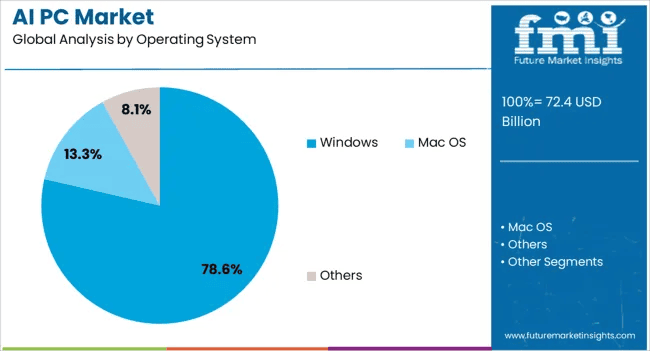
(Source: Future Market Insights)
- As of 2025, Windows will dominate the global AI PC market with a 78.6% share.
- Furthermore, macOS is followed by other platforms at 13.3%, with the remaining 8.1% accounted for by other platforms.
By Compute Type

(Source: futuremarketinsights.com)
- In the global AI PC market by compute type, GPUs hold 53.4% share, NPUs account for 28.0%,
- Meanwhile, almost 18.6% of systems sold worldwide are accounted for by other processing options.
AI PC Shipment Statistics
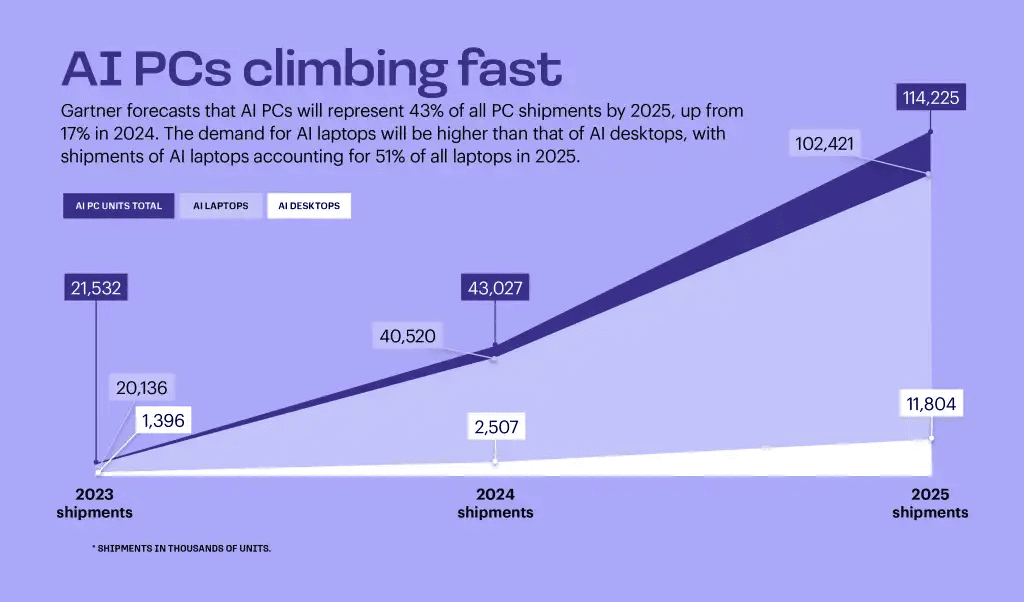
(Source: b2b-contenthub.com)
- Global AI PC shipments are expected to reach about 114 million units by the end of 2025, showing a 165.5% rise compared with 2024, reflecting accelerated adoption of AI-ready computing systems across all user groups.
- AI laptop shipments are estimated to reach 102,421 thousand units in 2025, rising significantly from 40,520 thousand units reported in 2024, indicating strong preference for portable AI-enabled devices.
- AI desktop shipments are projected to reach 11,804 thousand units in 2025, compared with 2,507 thousand units in 2024, highlighting steady growth as enterprises adopt AI-capable fixed workstations.
- Total AI PC shipments are expected to reach 114,225 thousand units in 2025, up from 43,027 thousand units in 2024, confirming rapid expansion driven by new AI processors, improved efficiency, and broader ecosystem support.
Furthermore, segmental shipments of the AI PCs are stated in the table below:
| Segments | 2025 (Estimated) | 2024 |
| Shipments (Thousands of Units) |
||
|
AI Laptops |
102,421 | 40,520 |
| AI Desktops | 11,804 |
2,507 |
|
Total AI PC Units |
114,225 |
43,027 |
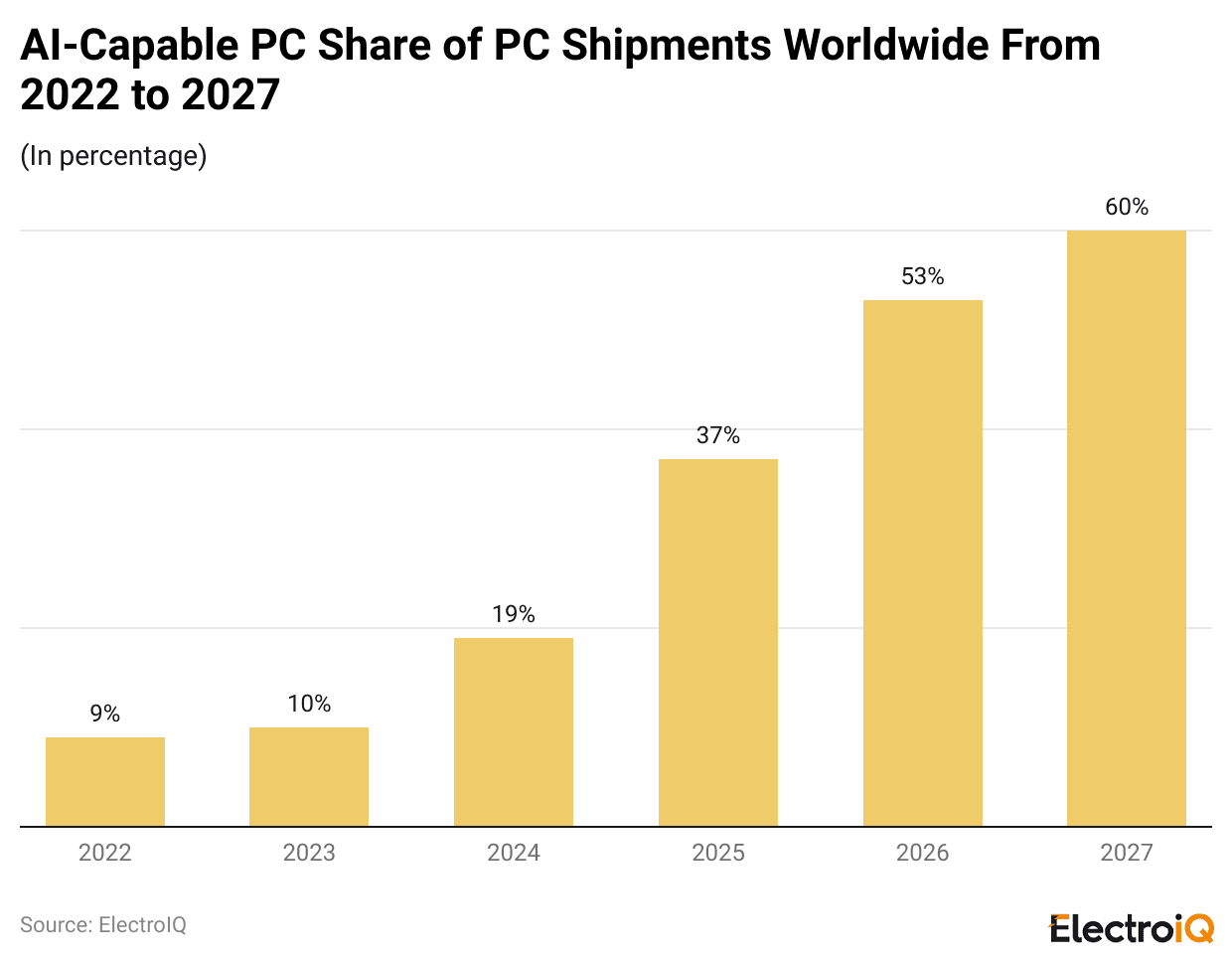
(Reference: electronics360.globalspec.com)
- AI-capable PCs account for 9% of shipments in 2022, increasing to 10% in 2023 and 19% in 2024.
- Their share is projected to reach 37% by 2025, 53% by 2026, and 60% by 2027.
AI PC Market By Country

(Source: futuremarketinsights.com)
- From 2025 to 2035, the AI PC market CAGR is strongest in China at 57.8%, followed by India with 53.5% and Germany at 49.2%.
- Over the same period, France records 44.9%, followed by the United Kingdom (40.7%) and the United States. (36.4%), and Brazil (32.1%).
Top Departments Expected to Receive AI PCs First
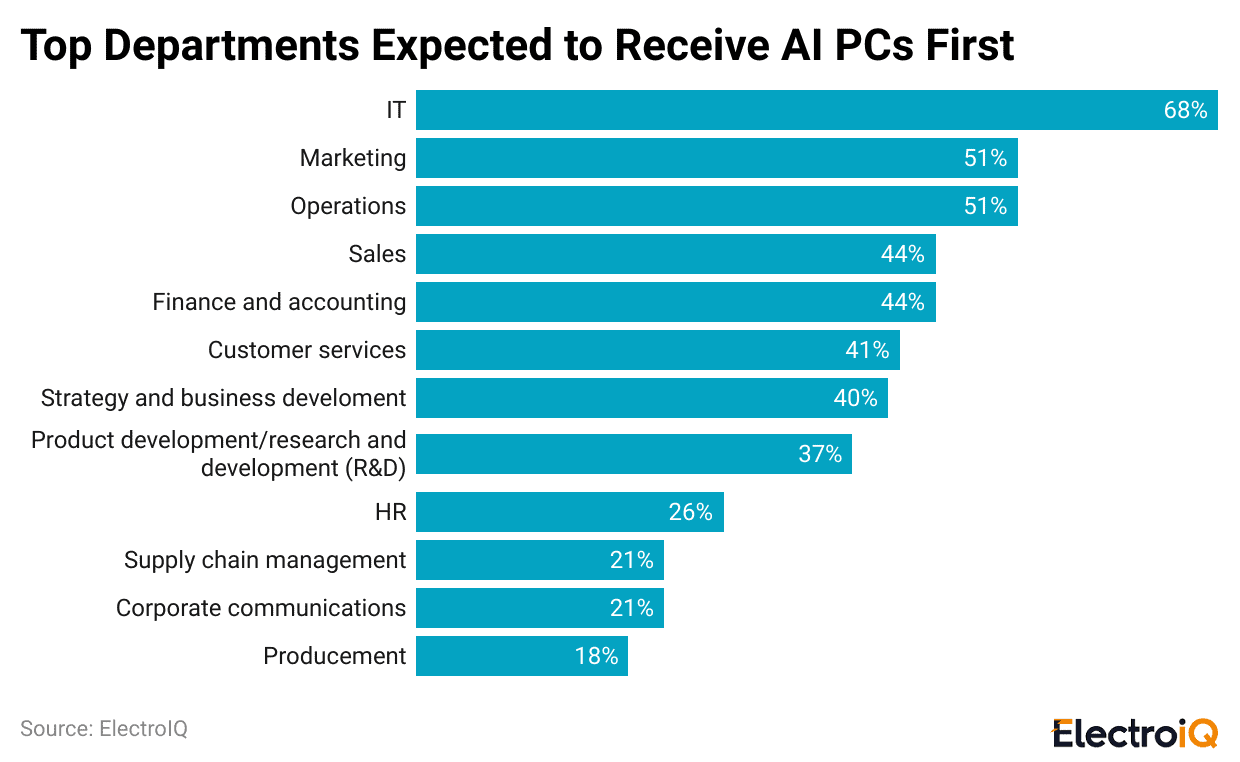
(Reference: amd.com)
- According to amd.com, organizations expect IT to receive AI PCs first (86%), followed by marketing and operations (each 51%), sales and finance and accounting (both 44%), customer service (41%), strategy and business development (40%), product development/research and development (R&D) (37%), and HR (26%).
- Additionally, supply chain management and corporate communications are each cited by 21% of respondents, while procurement is selected by 18%.
Top Expected Impacts of AI PCs
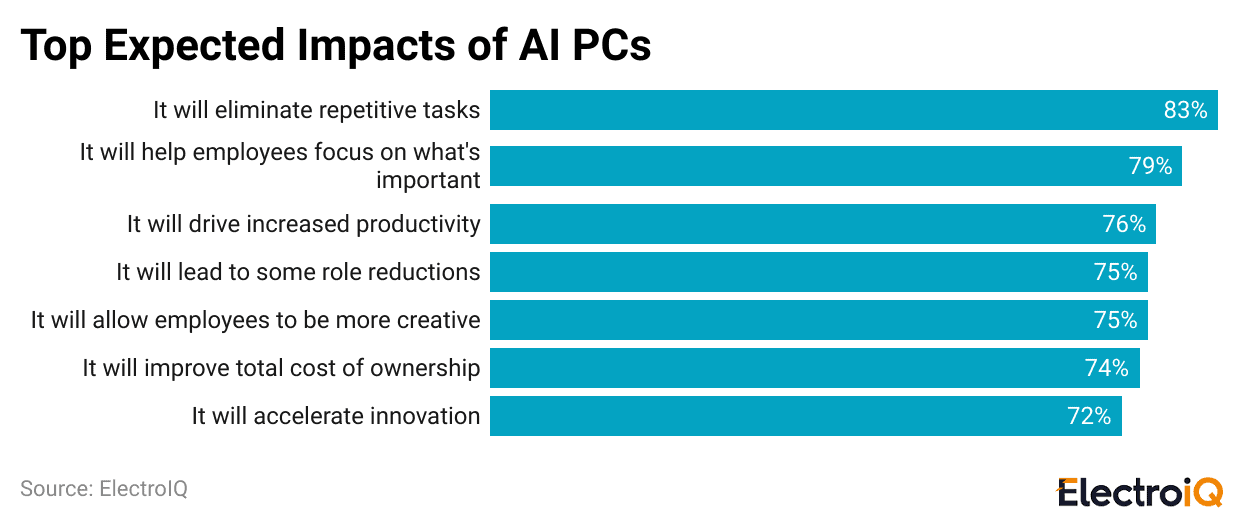
(Reference: amd.com)
- As of 2024, organizations expect AI PCs to eliminate repetitive tasks (83%), help employees focus (79%), and drive higher productivity (76%).
- Additionally, 75% expect AI PCs to lead to some role reductions; another 75% believe they will allow employees to be more creative; 74% say they will improve total cost of ownership; and 72% anticipate that AI PCs will accelerate innovation.
Impact of AI PC Launch on Organisational PC Refresh Plans

(Reference: amd.com)
- AI PCs are changing how companies plan to replace their computers, as 73% of organisations are now speeding up refresh cycles.
- Additionally, 14% have slowed their refresh plans, and 13% say the arrival of AI PCs has not changed their timing.
Consumer Awareness of AI-Enabled Products Statistics

(Source: nielseniq.com)
- Awareness peaks for AI-enabled domestic appliances at 40%, followed by small domestic appliances at 33%.
- A further 26% of consumers have heard of none of these products, while only 22% know about AI laptop PCs and 21% are aware of TVs with onboard AI functionality.
Consumer Interest in AI-PCs Versus Other Laptop Priorities
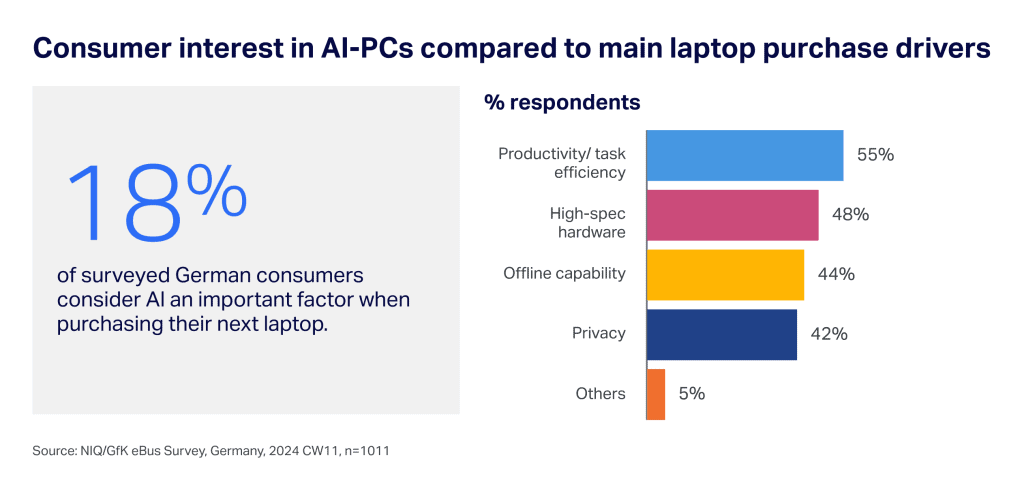
(Source: nielseniq.com)
- As of 2024, almost 18% of surveyed consumers in Germany prioritize AI when choosing a new laptop.
- Traditional factors accounted for the highest share of purchases, with 55% prioritizing productivity and overall task efficiency.
- Followed by 48% prioritize high-specification hardware, 44% value offline capability, 42% focus on privacy, and only 5% mention other reasons.
Key Barriers to Buying AI PCs Statistics
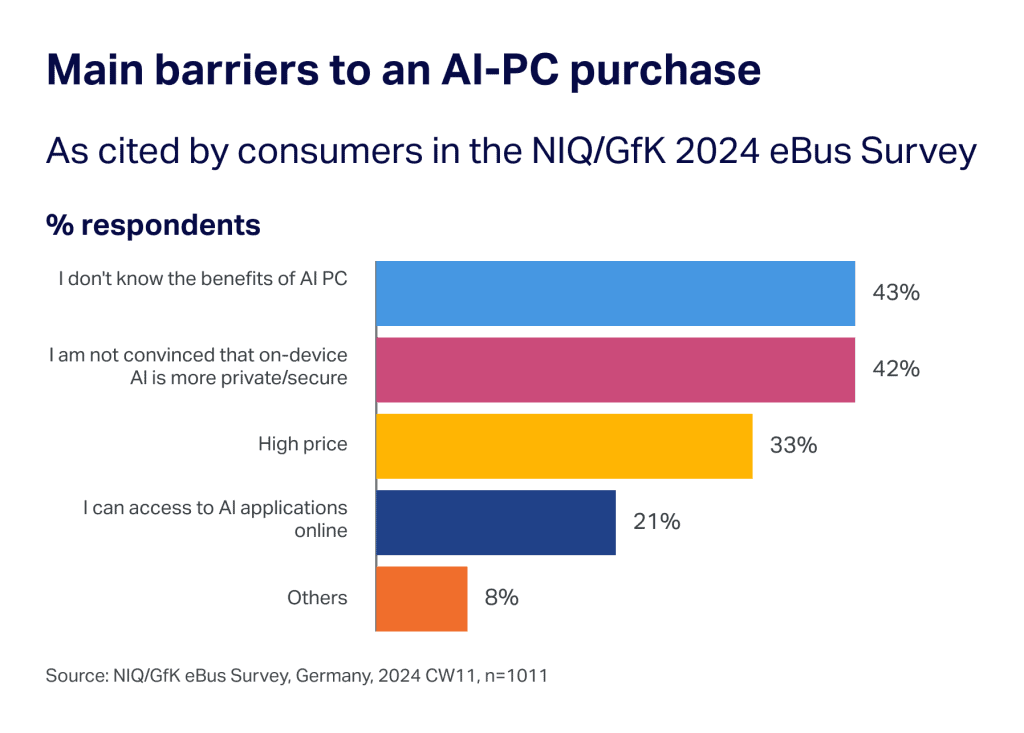
(Source: nielseniq.com)
- It is observed that 43% of potential buyers are still not aware of the benefits of AI PCs, while 42% remain concerned about on-device AI privacy and security, which continues to limit wider adoption.
- High prices account for barriers for 33% of users, and 21% prefer to rely on online AI applications rather than invest in AI-enabled hardware, while 8% report other mixed concerns that influence their purchase decisions.
- The ability to increase user productivity is the most valued capability, accounting for 27% of the benefit share among companies adopting AI PCs in 2024.
- Strengthening security and compliance is recognized as a major advantage, supported by 25% of organizations seeking more secure computing environments.
- Reducing operational costs is viewed as a meaningful outcome, reflected by 18% of enterprises that use AI PCs to optimize workflow efficiency.
- 16% of firms aim to improve customer engagement by upgrading service quality through AI-driven interactions.
- 14% of companies identify accelerating product innovation as a key benefit of leveraging AI PCs to support faster development cycles and more advanced solution design.
Features of AI PCs Delivering the Most Benefit to Companies (2024)
| Features | Benefit Share |
| Increase user productivity |
27% |
|
Strengthen security and compliance |
25% |
| Reduce operational costs |
18% |
|
Improve customer engagement |
16% |
| Accelerate product innovation |
14% |
Awareness of NPUs and AI PCs Among IT Decision-Makers
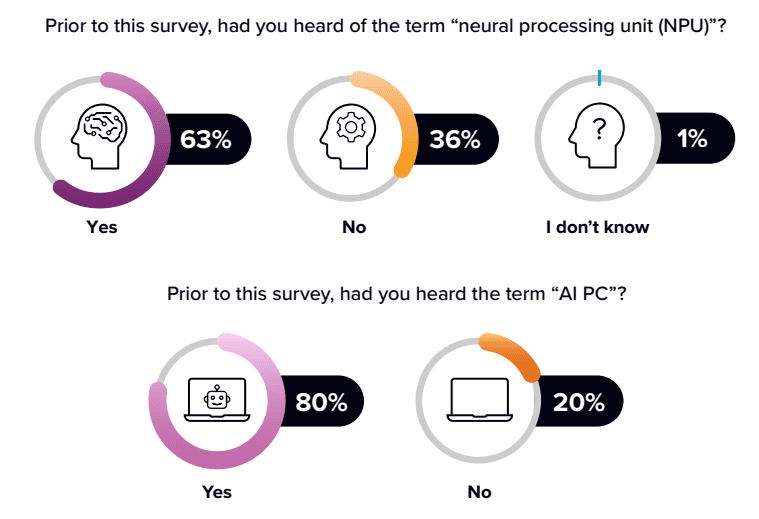
(Source: intel.com)
- In 2025, IT decision-makers showed awareness: 63% knew the term neural processing unit, while 36% did not, and 1% were unsure.
- Meanwhile, awareness of AI PCs is higher, with 80% having heard the term and only 20% remaining unfamiliar today.
Conclusion
After completing the AI PC Statistics article, it is very clear that AI PCs are bringing in a new era of computing by offering faster speeds, smarter features, and safer on-device processing. With NPU-powered CPUs and GPUs working together, these computers can handle complex AI tasks without relying on the cloud.
The rising interest in AI PCs in offices, schools, and creative fields shows just how important advanced features have become. With technology continuing to improve, these devices are expected to increase productivity, offer stronger and smarter tools, and change the way people use their computers in everyday life.
Sources
FAQ.
An AI PC performs faster processing, smart automation, real-time translation, enhanced editing, and improved security tasks.
An AI PC includes specialized AI hardware, such as an NPU, enabling faster on-device processing, while a normal PC relies mainly on the CPU and GPU.
NPUs are important because they speed up AI tasks, improve efficiency, and allow faster on-device processing.
AI PCs can run many AI tasks offline, but still need the internet for online features.
Yes, AI PCs usually cost more because their advanced AI hardware and features increase overall performance.

Maitrayee Dey has a background in Electrical Engineering and has worked in various technical roles before transitioning to writing. Specializing in technology and Artificial Intelligence, she has served as an Academic Research Analyst and Freelance Writer, particularly focusing on education and healthcare in Australia. Maitrayee's lifelong passions for writing and painting led her to pursue a full-time writing career. She is also the creator of a cooking YouTube channel, where she shares her culinary adventures. At Smartphone Thoughts, Maitrayee brings her expertise in technology to provide in-depth smartphone reviews and app-related statistics, making complex topics easy to understand for all readers.


